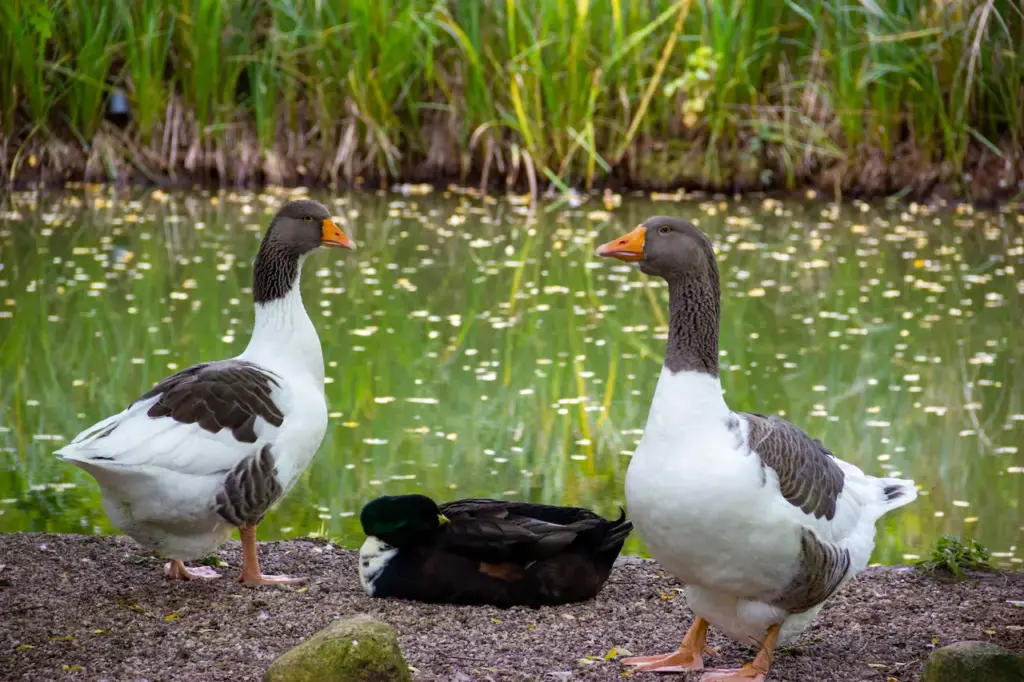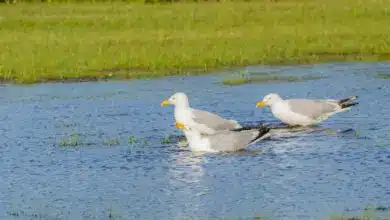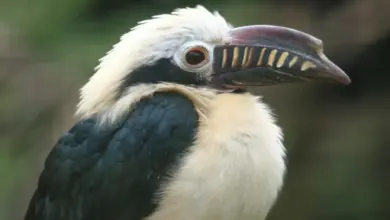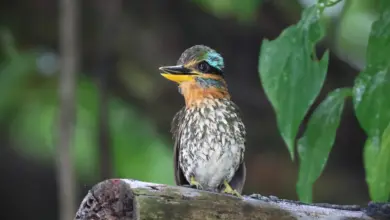The Pomeranian Geese originates from North East Germany. It is the only descendent of the European Greylag specifically bred for a single-lobed paunch (Ashton, 1999).
In Europe, it is found in Grey and White but the most popular and common form is the Saddleback, which is the variety mainly found in the United States, in both Buff and Grey.

Description:
This is a good-size, heavy-set, medium-sized goose breed. Ganders weigh between 17 to 18 lbs; while hens tend to weigh in at an average of 15 lbs.
The Pomeranian comes in a variety of colours and patterns. Historically the Greys were the most popular, but in the later 20th century the Saddleback (both Buff and Gray) became the more popular type.
German Pomeranians are coloured white, grey, saddleback buff, or saddleback grey.
Saddleback Pomeranians exist only in North America. The head, back, and flanks of a saddleback are either buff or grey.
A Pomeranian should have a pinkish-red beak, as well as reddish-orange legs and feet, and blue eyes (Holderread, 1981).
Pomeranian geese have slightly flattened heads, stout necks, protruding breasts, and rounded bodies. The paunch is single-lobed.
Breeding:
These are hardy geese and are quite prolific. They can produce between 60 to 80 eggs a season, although it is best to keep laying to 15 to 35 eggs annually to allow the parents the rest and to give them the physical recovery they need. The eggs are incubated for 28 to 34 days. Ganders can be mated with three to four hens.
When selecting breeders, look for birds with chunky bodies and well-defined markings. When viewed from behind and above, the coloured areas of the backs and shoulders should be reminiscent of the classic heart shape. Solid-coloured heads are preferred, but many have white feathers around the base of their bills. Some strains of Pomeranians produce birds with slight indications of knobs at the base of their bills. Guard against this fault since it is evidence of crossbreeding. Also, avoid breeding from specimens with dewlaps, orange bills and feet, excessively white heads, dark feathers in the wings, and undersized bodies (Holderread, 1981).
Personality:
These geese are quite social and “chatty.” While some Pomeranians are docile, others may respond aggressively. Pomeranians tend to greet visitors noisily, so they make good watch (sentinel) birds.

Diet / Feeding:
Ducks and geese generally feed on larvae and pupae usually found under rocks, aquatic animals, plant material, seeds, small fish, snails, and crabs.
Feeding Ducks and Geese …
We all enjoy waterfowl and many of us offer them food to encourage them to come over and stay around – and it works! Who doesn’t like an easy meal?
However, the foods that we traditionally feed them at local ponds are utterly unsuitable for them and are likely to cause health problems down the road. Also, there may be local laws against feeding this species of bird – so it’s best to check on that rather than facing consequences at a later stage.
- Foods that can be fed to Ducks, Geese and Swans to survive cold winters and remain healthy.
Please note that feeding ducks and geese makes them dependent on humans for food, which can result in starvation and possibly death when those feedings stop. If you decide to feed them, please limit the quantity to make sure that they maintain their natural ability to forage for food themselves – providing, of course, that natural food sources are available.





